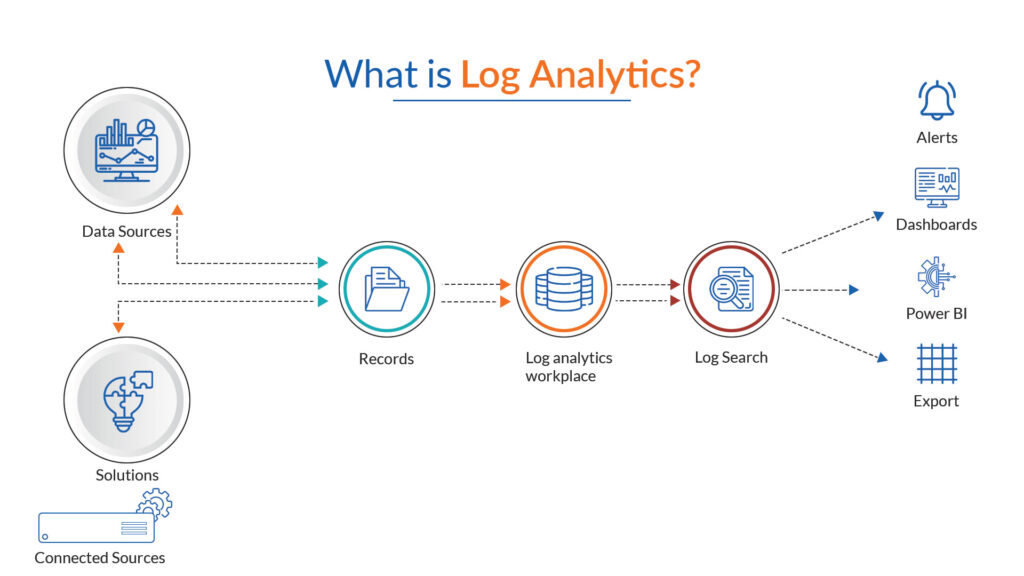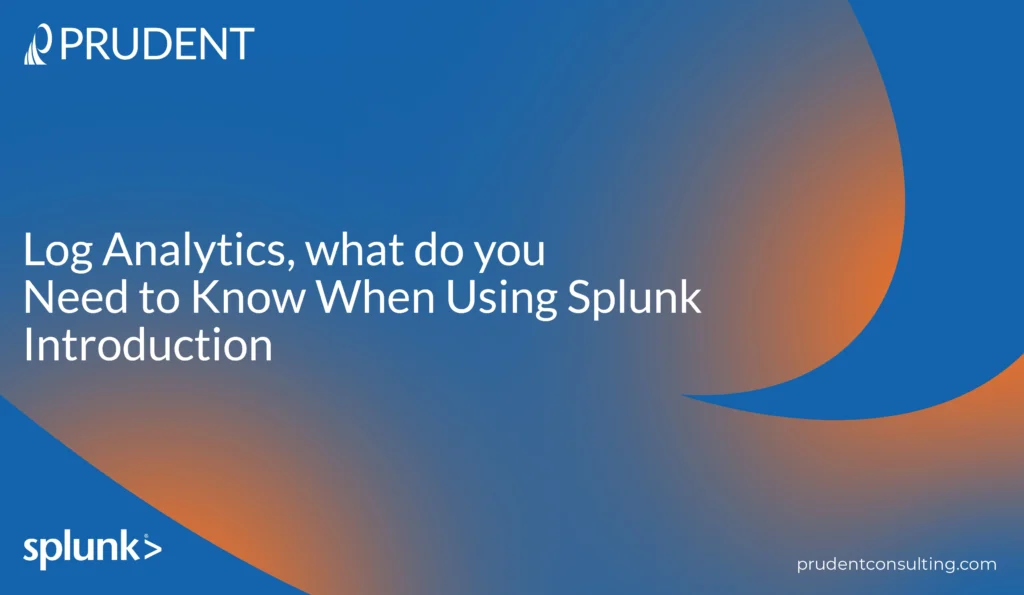Introduction
Log data can tell us a lot about how the business is operating, and any analytics that can be deemed from the plethora of data that is loaded into Splunk from various sources such as software applications, network nodes, components, and data center servers, connected devices and sensors and consumer online activities and transactions. Log data contains valuable information about the behavior of a system, end-user activities and habits, and even machine performance that can predict future outcomes. Log data can tell you a lot, but how do you get user-friendly information out of this data? This is where log analytics comes in handy.
Why do we need logs?
The first step in understanding Log Analytics is knowing what logs are. Logs are files that can be structured or unstructured but are consumed by a logs search engine for unplanned research or unique situations and are great for security use cases. Logs are the way to achieve company-wide operational intelligence. Logs get generated on computing and non-computing devices, meaning many servers and systems will keep track of different types of logs. Server logs keep track of sources of IP traffic security threats, network vulnerability, and network traffic and spikes. System logs keep track of system performance, CPU usage and load, user access logs, and app performance.
How does Log Analytics work?
Log analytics is integral to data analytics, which aggregates log data from various sources and transforms it into actionable insights. Logs do not begin in human-readable form; thousands are generated every minute. To fully understand log analytics, it is essential to grasp the intricacies of computing interactions and the environment in which these interactions occur. This means understanding the system devices, users, and identifiers, such as specific TCP/IP protocols, which help identify workload or network requests.
Once you have determined all the information you need, you can monitor the network and use any information gained to analyze logs and identify unusual behavior. In other words, when an action is performed on the system, every aspect of the action is kept track of by the system used to act. Every action that a user makes generates a log of information called metadata. This information keeps track of things like when the action occurred, the part of the system involved, and any errors that might have happened. These log files contain all relevant information to keep educated about the action’s effects on the system in which the action is being performed.

How can a Data Platform Help with any Challenges Posed?
With log analytics, you can gain a better understanding of the unpredictable states of the system. Still, the main challenge is that log data volume can sometimes be overwhelming and hard to manage.
A data platform helps ingest, process, analyze, and present system-generated data when performing an action. A data platform helps keep track of log analytics to improve decision-making because it can manage many types and structures of data across the entire organization, including data used to comply with security policies and IT (Information Technology) operations. One of the benefits of using a data platform is a centralized database that eliminates data silos within the organization. Log analytics aims to gain a deeper understanding of what actions are being performed in a system, and being unable to share that data with everyone in the organization defeats the purpose of being able to perform log analytics. A data platform is a single platform that holds all data that can be shared across the organization so that everyone has a holistic view.
A data platform guarantees efficient data pipeline processing for real-time log data streams and that large volumes of structured, unstructured, and semi-structured log data are stored and analyzed. A data lake and data warehouse are two notable examples of data platforms for log analytics.
What can you use Log Analytics for?
Log analytics can help you keep track of security threats and analyze business metrics in real time; here are three other use cases where log analytics can be helpful.
First is real-time monitoring and observability to track the issues that log analytics can show and try to fix them quickly. A company’s IT operations and incident management teams use data to respond to and resolve issues that could arise 69%(Source link) faster than they could have even detected the threat incident without log analytics. IT operations and incident management teams rely on data to decide workload distribution, network traffic control, and resource and incident management. The data is stored in centralized repositories, which makes it easy for it to undergo an analysis to help teams respond quickly.
The Security Information and Event Management (SIEM) team uses cybersecurity log analytics to build a view of the log data that contains login information and system activities so that cybersecurity logs and analytics tools can begin to assess the threat. The cybersecurity team can guarantee enhanced security with a holistic view of the security framework. Any data collected can be fed directly into the threat and vulnerability database to build a comprehensive view of threats to the company, whether internal or external.
Finally, log analytics can be helpful for business intelligence. The e-commerce industry uses log analytics to track and analyze how users interact with online services to understand consumers’ buying process and journey better. Thanks to different Key Performance Indicators such as page views to clicks, log analytics can help determine targeted advertising to increase conversion rates and sales.
How does Splunk fit into Log Analytics?
Splunk is the ultimate log collection and analysis tool, but how did it come across that title? Splunk can help you with:
- Real-time log forwarding means that logs can be collected from one instance or server and forwarded to a remote instance.
- Syslog analysis or server analysis can be installed on any system and monitor any application-based server monitoring. This allows you to install Splunk on any server to see the IP traffic, how many people are on your website, and even the action they want to/are taking. As mentioned in the use cases, E-commerce companies find this especially useful to determine who are the most promising candidates to become customers.
- Alerts and notifications will come in handy if there is a security threat or someone is accessing the network from an unreliable source. Installing Splunk on a server to monitor its CPU performance is even possible.
- Storing historical data and analysis helps with more than real-time data. You can set Splunk buckets for a particular amount of time to make the data easily accessible before it becomes archived. When the data is in those specific Splunk buckets, you can efficiently analyze it even though it is not the most current data. Once the Splunk buckets expire, they will not necessarily be lost but archived.
Cloud Log Management
Old-time logging analytics strategies have worked well- for what was necessary for the time. Now, there has been an increase in the amount of data that needs to be analyzed, interpreted, and stored. Optimizing data analytics reliability and performance in today’s world may require reassessing your data logging needs. In a cloud-native environment, you have higher observability, open standards, no-code requirements, de-silo logs, and the ability to contextualize and shape log data. This means you can gain a complete end-to-end understanding of what is happening in your data at any moment.
After Log Analytics/ Conclusion
Log analytics aims to get you through to the reporting stage, generate insights from log data, and keep track of actions taken to determine business outcomes that can be evaluated. This can include activities to improve data collection and the analytical process itself. Splunk helps you from beginning to end so that you can predict and detect problems and know where to look with directed troubleshooting to catch problems before they even occur, but it can be challenging to know where to begin. Take the best first step towards exploring log analytics capabilities by connecting with experienced Splunk Consultants like the ones offered by Prudent. Do not wait any longer – click here now to uncover the potential of log analytics for your business!

